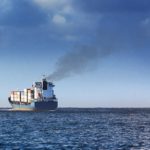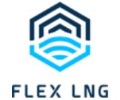Tankers: What Will They Carry From 2040 Onwards?
 A global push towards renewable energy and away from fossil fuels is already accelerating, as the world is edging towards a Net Zero Emissions Future. How close is this future and more specifically, if it is achieved, will tankers become obsolete in a few years’ time, or is there still a generation’s worth of trading?
A global push towards renewable energy and away from fossil fuels is already accelerating, as the world is edging towards a Net Zero Emissions Future. How close is this future and more specifically, if it is achieved, will tankers become obsolete in a few years’ time, or is there still a generation’s worth of trading?
In its latest weekly report, shipbroker Gibson said that “last month the International Energy Agency (IEA) released its Net Zero 2050 report, outlining the actions that are needed to achieve net zero emissions globally by 2050. To reach this, the IEA calls for no new oil and gas developments from this year onwards. In the Net Zero Emissions Case (NZE), world oil demand never returns to pre-pandemic levels, declining from around 90 million b/d in 2020 to just 24 million b/d by 2050. Net zero targets rely on further rapid deployment of available technologies as well as the development of new technologies. In 2050, almost half of emission reductions come from technologies that currently are at the demonstration or prototype stage”.
According to Gibson, “in detail, the road map plan to net zero emissions includes:
1. Solar and wind power capacity additions of 1,020GW a year by 2030, or four times the record level achieved last year.
2. Electric vehicles gofrom around 5% of global car sales currently to more than 60% by 2030.
3. Annual battery production for EVs increases from 160 gigawatt hours currently to 6,600 GWh in 2030, equivalent of adding almost 20 gigafactories each year for the next ten years.
4. Every month from 2030 onwards, ten heavy industrial plants need to be equipped with carbon capture technology, three new hydrogen based industrial plants need to be built, and 2GW of
electrolyser capacity needs to be added at industrial sites.
5. Global electricity networks that took over 130 years to build need to more than double in total length by 2040 and increase by another 25% by 2050”.
The shipbroker added that “the IEA openly admits that actions needed to achieve net zero emissions are highly ambitious and require unprecedented urgent action from governments around the world. Some feel these targets are unrealistic to achieve, with a number of countries rejecting the call for no new oil and gas investment. The IEA itself notes that although over the past year there has been a rapid increase in governments pledging to cut greenhouse emissions to net zero, less than a quarter of these pledges are fixed in domestic legislation, and few are underpinned by specific policies to deliver as promised on time and in full. Further highlighting the uncertainly, the IEA calculates in its Stated Policies Scenario (STEPS) (which takes into account only specific policies that are in place or have been announced by governments) that oil consumption in 2050 is 15% higher than in 2020. In the Announced Pledges Case (APC) (which assumes that all announced national net zero pledges are achieved in full and in time), oil demand does not return to its peak in 2019, instead it eases off gradually by just 10% from its 2020 level to 80 million b/d by 2050. Interestingly, a broadly similar view of the future was shared by Vitol at the recent FT Commodities Global Summit, where the chief executive suggested that oil demand could peak around 2030 but at first demand would not fall sharply initially, instead plateauing well above the 100 million b/d reached in 2019”, Gibson noted.
“With exception of net zero case, all alternative scenarios discussed above support tanker trade to a varying degree over the next two decades. Yet, environmental pressure will only intensify further going forward and so the peak in oil demand is likely to happen sooner rather than later. Nonetheless, the tanker industry is also highly cyclical and is facing similar environmental pressures. Even without the latest IMO measures, from 2030 onwards the majority of the fleet is likely to consist of tankers built in 2015 or later, which are for the most part between 15% to 25% more fuel efficient that those built prior to 2015. If oil demand peaks sooner than expected, the scrapping pressure on the least fuel efficient tonnage will increase exponentially, eventually rebalancing tanker supply with demand, albeit at lower absolute levels of trade”, Gibson concluded.
Nikos Roussanoglou, Hellenic Shipping News Worldwide

 Hellenic Shipping News Worldwide Hellenic Shipping News Worldwide, Online Daily Newspaper on Hellenic and International Shipping
Hellenic Shipping News Worldwide Hellenic Shipping News Worldwide, Online Daily Newspaper on Hellenic and International Shipping






















 PG-Software
PG-Software